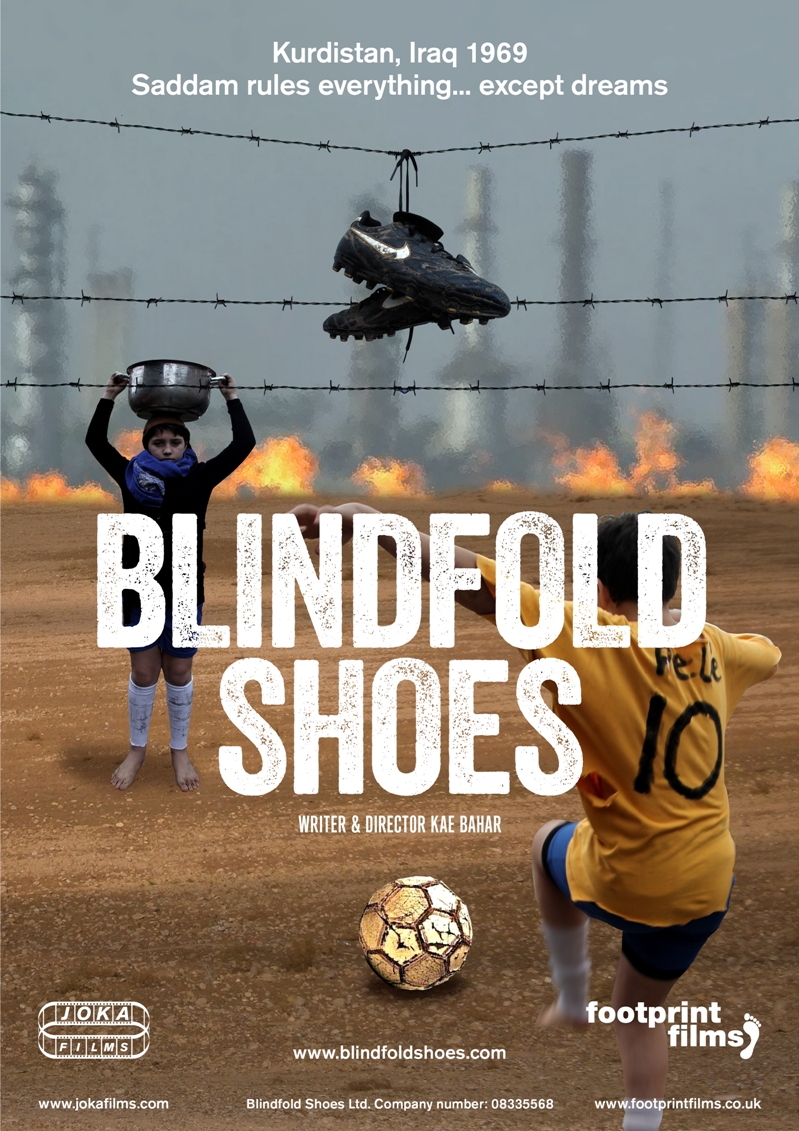|
|
Synopsis
 Tishko is 10 years old, he
loves football and dreams of seeing Pele play for Brazil v. Iraq in Baghdad.
But this is Kurdistan in 1969 and Saddam is in power and no Kurds are safe.
Tishko has nothing, not even a pair of shoes and now he is about to lose the
home he shares with his mother and older brother. Tishko is 10 years old, he
loves football and dreams of seeing Pele play for Brazil v. Iraq in Baghdad.
But this is Kurdistan in 1969 and Saddam is in power and no Kurds are safe.
Tishko has nothing, not even a pair of shoes and now he is about to lose the
home he shares with his mother and older brother.
When all seems lost he meets an oil worker, Mr English, who offers him a way
out and a ticket to the game – if he can keep a promise. Now, for one
extraordinary day Tishko must pit his wits against the local bullies,
Saddam’s militias, his wayward brother, over-zealous mullahs, cheating oil
guards and unforgiving shopkeepers, to fulfil his quest, save his family
home and most importantly, see Pele in action.
It is a story of love and loss and one boy’s helterskelter journey into
adulthood.
About
The script is by Kae Bahar,
a native Kurd who has spent the last 17 years in the UK. He knows just what
it was to have been that child in Kurdistan and he feels it is the perfect
time to share his experiences with the world.
Pele’s profile is rising again with Brazil acting as host for both the World
Cup in 2014 and the Olympics in 2016.
Football's following and the passion it evokes remains undiminished, not
only in the Middle East, but globally. This, combined with the fact that
Iraq, Kurdistan and the wider Middle East remain at the forefront of world
news makes it the perfect time to tell the story of Tishko and his
footballing hero.
Director’s Vision
Blindfold Shoes will be
given a naturalistic approach to convey the depths of Tishko’s psychological
world as he battles to keep his promise and to save his family home.
The overall visual is based on layers of colour contrasts as Tishko shuttles
between his conflicting emotions of hope and frustration. These emotions,
together with heightened colours, (which will be used to highlight certain
crucial moments in the film), will gradually develop and intensify
throughout the story. Cold hues will paint Tishko’s sullen exterior world,
while warmer tones will be introduced to convey his (repressed) dreams and
potential. The interplay of these shades will offer the film a sense of
dynamism and appeal.
Visual references to inspire Blindfold Shoes include: Innocent Voices
(2004), Slumdog Millionaire (2008), Cinema Paradiso (1988), Star Wars, the
Phantom Menace (1999), City of God (2002), Hugo (2011), E.T. (1982), The
Kite Runner (2007).
|
|
.jpg)
.jpg)
.jpg)
.jpg)
.jpg)
.jpg)